One of the best things about working with cork oak bonsai is that you can cut almost anywhere on the tree and expect new buds to pop. The buds don’t always appear where you want them, but there are usually enough to work with.
A year ago I repotted the cork oak below and then let it grow freely for the remainder of the growing season. Here’s what the tree looked like mid-March.
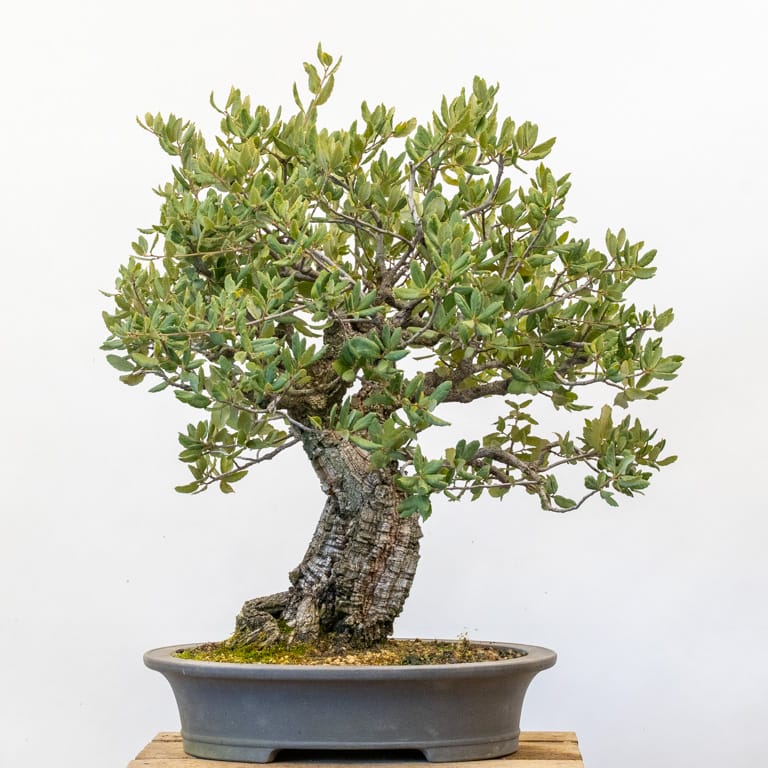
Cork oak
Because the tree had a number of large branches near the top of the tree with poor branch division (long internodes), I decided to cut back the top of the tree in order to improve the branch structure.
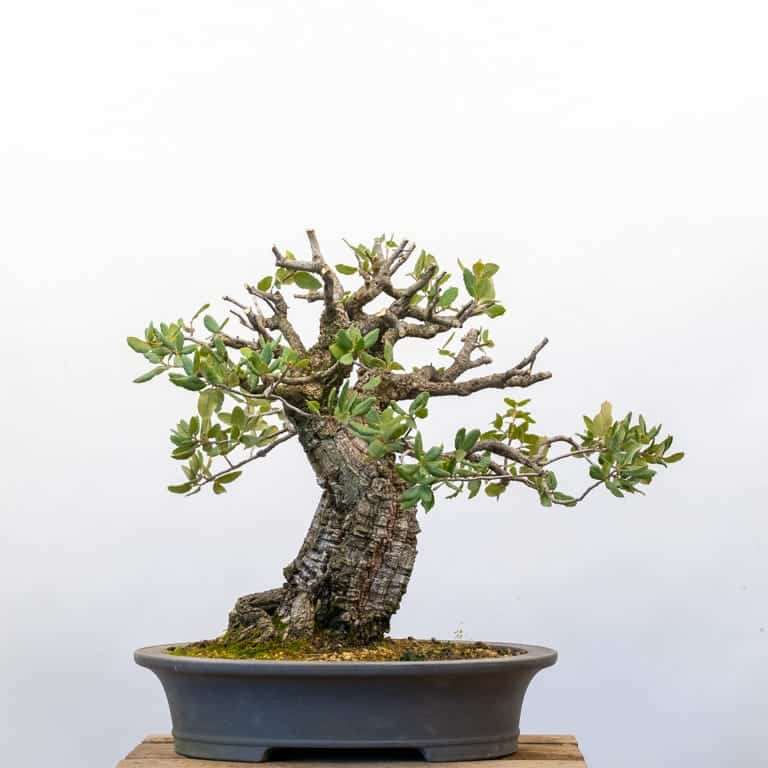
After pruning
I left the lower branches alone as cork oaks have strong apical dominance and I want the lower branches to thicken. I wired the slender branches to add movement.
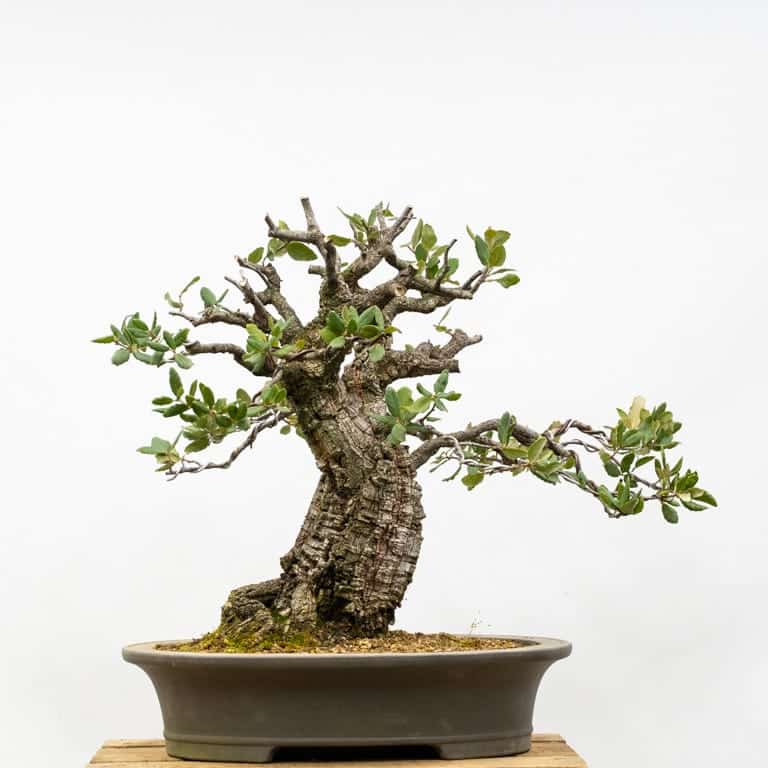
After wiring
Just six weeks later the tree was covered with new buds.
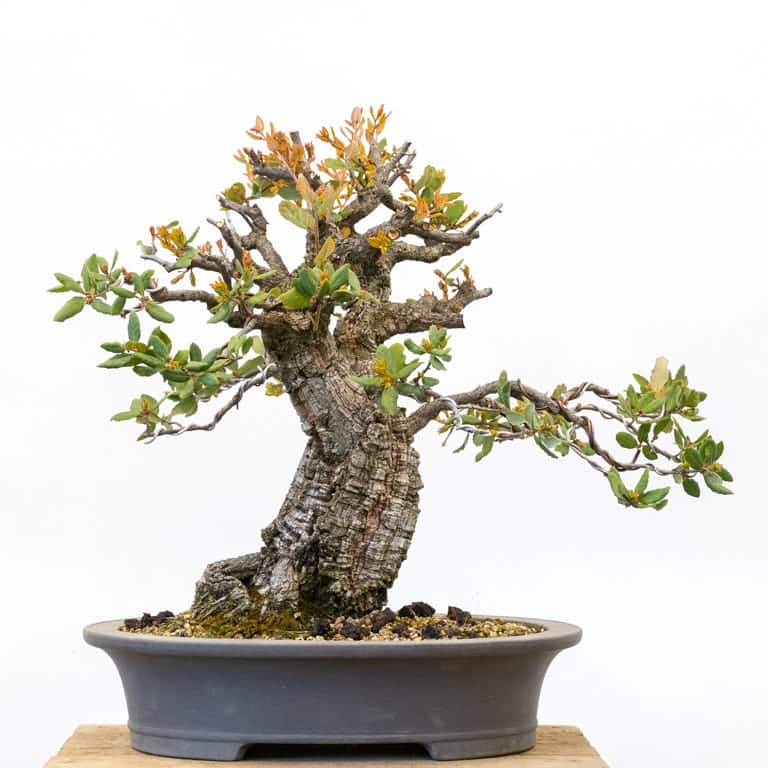
New growth – 18.5″
The following photos offer a good example of where to expect new growth when pruning cork oaks.
If you leave foliage on the upper branches, it’s common to get lots of new buds.
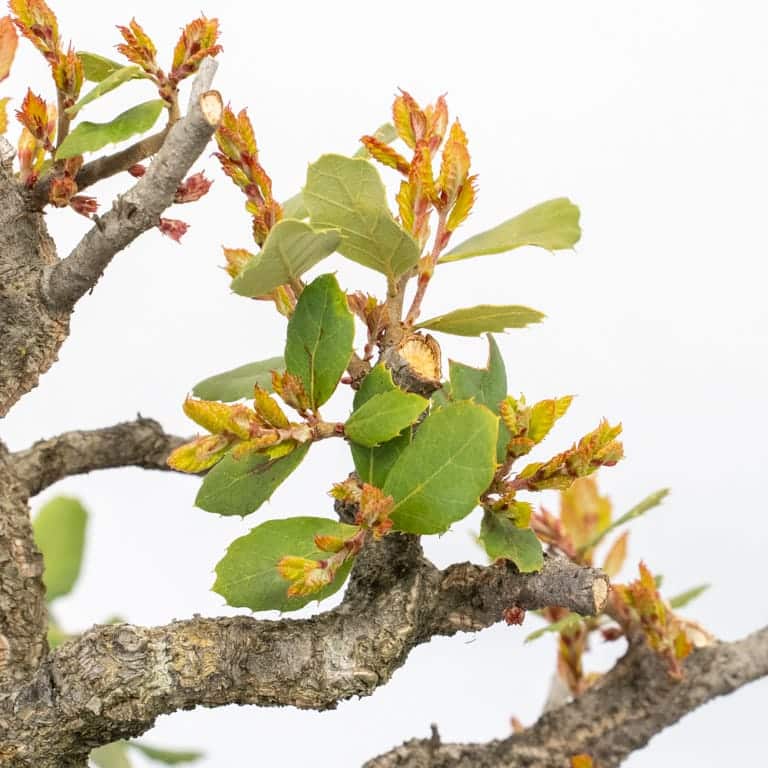
New shoots among old leaves
Branch junctions are another common spot to expect new growth.

New shoots at branch junction
Oaks aren’t always picky about producing branches that emerge from the tops of branches so you may find a surprising number of buds emerging on the undersides of branches.
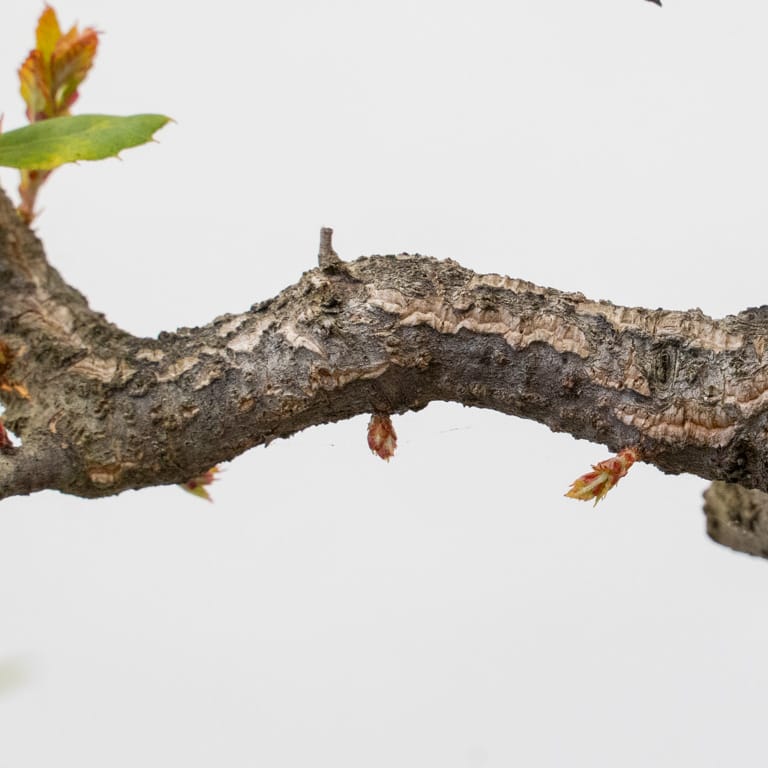
Buds on the underside of the branch
On the plus side, it’s relatively easy for cork oaks to produce new buds on the trunk, even if there’s a lot of cork on the tree.
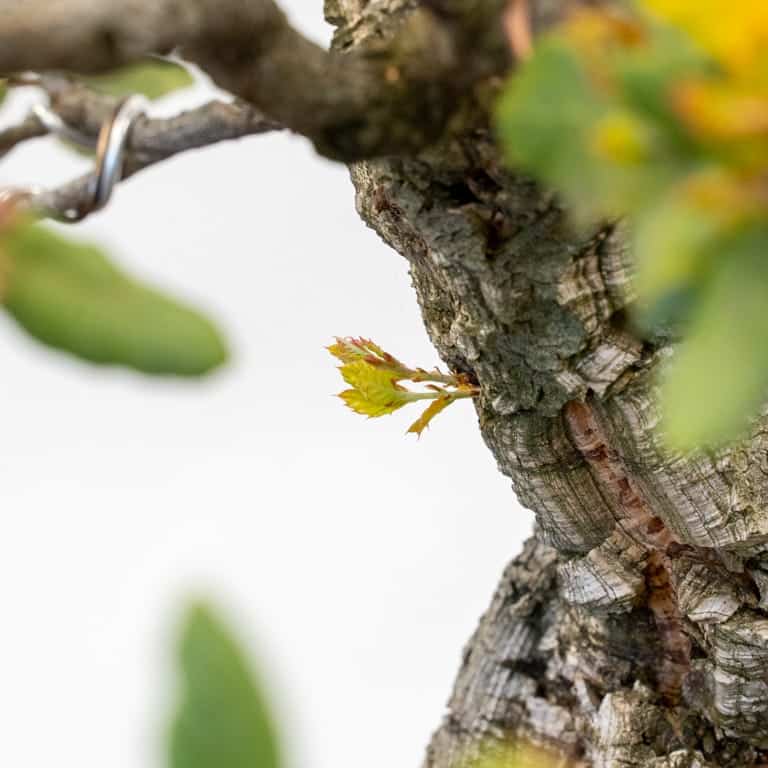
New growth on the trunk
Every once in a while, you’ll find a perfect distribution of shoots that can provide great options for styling once the new growth hardens off.
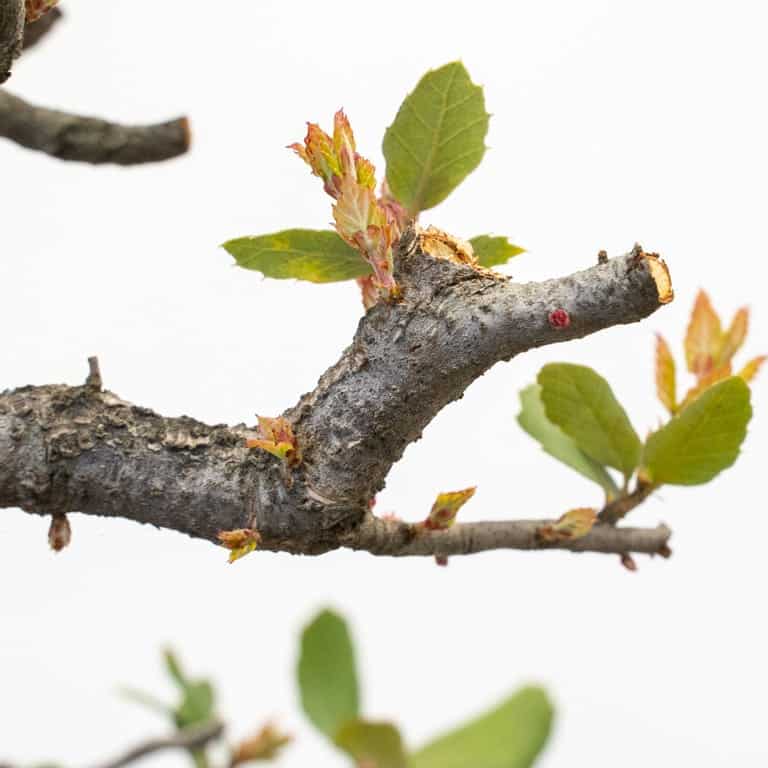
Great distribution of new buds
I’ll let the tree grow freely for the next few months and look to wire and prune again in either summer or fall.
One Day Left: Pacific Bonsai Expo Submission Period Closing Soon!
For everyone who submitted trees to the 2024 Pacific Bonsai Expo – thank you! We’ve received some fantastic submissions this year and are super excited to see the trees in persona
And if you haven’t submitted, you have until midnight on April 30th – tomorrow! – to submit trees at the jury. Learn more about the process on the Expo website.
Subscribe to Bonsai Tonight
New Posts Delivered Every Tuesday and Friday
Scott Roxburgh says
Thanks for the continued information on cork oaks Jonas.
Do you rub any of the buds off that are in obviously wrong places or let them all harden, then prune to the ones that you want to keep?
Jonas Dupuich says
Hi Scott! Any buds you don’t need can be removed at any time.
Marty Weiser says
Do other oaks tend to respond in a similar manner? I am working with several other varieties that are still young. The canyon live oaks that I am growing in a much colder climate with winter green housing are developing the quickest, so I am most interested in your comments about them.
Jonas Dupuich says
Budding is similar with other live oaks I’ve worked on, but I haven’t worked on enough deciduous species of oak to know if there are significant differences. In general, I’ve found deciduous oaks are like other deciduous species in that budding is pretty good after cutback on old wood.
Sean says
Would this information also apply to coast live oak, or should that be treated differently? Thank you.
Jonas Dupuich says
Hi Sean – I treat cork and live oaks the same as budding is similar. I usually see more overall buds on cork oaks, particularly on the trunk, but budding tends to be good on healthy live oaks too.